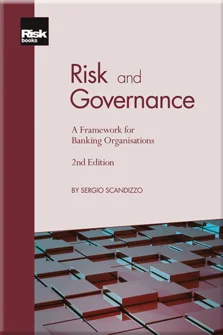The Board of Directors
The Board of Directors
Introduction: The Confluence of Risk and Governance
Corporate Governance, Information and Control
The Nature of Corporate Governance in Banking
Regulation and Governance
The Centrality of Risk Management
The Mission, Organisation and Governance of Risk Management
A Cartography of Banking Risks
Operations Risk in Extreme Market Conditions
Managing Legal Risk
Managing Reputation Risk
Drawing Boards: Motivations and Responsibilities in the Boardroom
Executive Compensation: Performance, Regulation and Ethics
Fair Value, Auditing and Internal Controls
Risk Management and the Role of Culture
The Board of Directors
Compensation
Auditing, Reporting and Disclosure
The risk governance framework outlined in the previous chapter makes sense only to the extent that the prevention of lower tail outcomes and the long-term viability of the firm is also the board of directors’ key objective. As we saw in Chapter 10, however, it is far from clear how directors’ fiduciary duties should be divided between shareholders and the company itself. Shareholders, who are indeed residual claimants but whose exposures may be lower overall than those of other stakeholders, may be perfectly willing – in view of the high potential profits – to take risks well beyond what other stakeholders, from staff to creditors to regulators, consider acceptable. Shareholder-elected directors, in turn, are – or at least should be –, inherently conflicted between constraining managers who are doing nothing but the shareholders’ bidding and trying to steer the bank away from dangerous cliffs. It makes little difference in this respect whether directors are independent of the firm or not, as they are all elected by the shareholders.
On the other hand, directors that represent other stakeholders with little to gain from excessive risk-taking, but who may bear the consequences of a
Copyright Infopro Digital Limited. All rights reserved.
As outlined in our terms and conditions, https://www.infopro-digital.com/terms-and-conditions/subscriptions/ (point 2.4), printing is limited to a single copy.
If you would like to purchase additional rights please email info@risk.net
Copyright Infopro Digital Limited. All rights reserved.
You may share this content using our article tools. As outlined in our terms and conditions, https://www.infopro-digital.com/terms-and-conditions/subscriptions/ (clause 2.4), an Authorised User may only make one copy of the materials for their own personal use. You must also comply with the restrictions in clause 2.5.
If you would like to purchase additional rights please email info@risk.net











